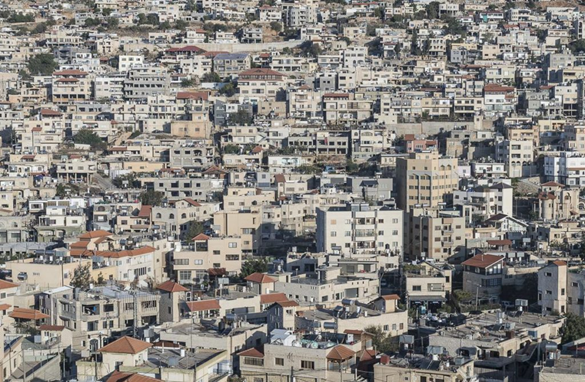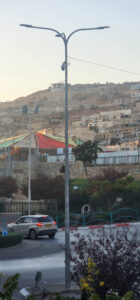The current situation in the Syrian villages of the occupied Golan.
Land constitutes a fundamental and essential element in the process of development, construction, and even in the issues of existence and survival. In addition to being an important economic resource, it has a distinct and clear impact on numerous aspects of life.
Before the occupation in 1967, the population of the five villages (Majdal Shams, Masa’ada, Buqa’atha, Ein Quniya, and Ghajar) owned more than 100,000 dunams (one dunam is approximately 1,000 square meters) of land. Over the years, the occupation authorities confiscated 56% of these lands for military and settlement purposes, leaving only 47,000 dunams in the hands of the Syrian village residents.
The lands were a primary source of livelihood for the inhabitants of the Golan Heights villages, where agriculture and livestock farming formed the backbone of the villages’ economy. However, livestock farming gradually disappeared from the economic arena of the residents of the villages, due to the expropriation of pasture lands. Over the years, agriculture has also due to discriminatory policies in the distribution of water resources. Farmers struggled to compete with the agricultural production of the Jewish settlements, which was generously organized, developed, supported, and subsidized by the government, which resulted in the villages losing significant economic resources. In addition, the Golan villages suffer from severe overpopulation. The land policies contributed greatly to limiting urban development, transforming them into underdeveloped population centers.
The approved structural plans emphasize the goal of concentrating the population of the villages in a limited area by imposing vertical (multi-story) construction and limiting horizontal expansion, even though the vertical construction contradicts the residential culture of the
villagers who rely on agriculture for their economy, as they have different social and housing 19 requirements than the residents of the urban areas. The imposition of vertical construction disregards these unique requirements and cultural considerations of rural residents.
In the past, urban expansion in the Golan villages would take place from the inside out, so this expansion towards the outer circles allowed for the preservation of green spaces and open areas between the houses. However, due to the limited urban areas, the Golan villages are
now experiencing a reverse urban expansion process – from the outside to the inside – which has resulted in the loss of open areas and an increase in the density of vertical construction, leading to a phenomenon known as “inverted urbanization”. Also, this process led to perpetuating the housing crisis, transforming it into a worsening crisis, because of planning and programs that ignore the culture and needs of the Arab community in the villages.
The lack of land for construction and programs that meet the needs of the population makes it difficult to obtain building permits, which has led to the worsening of the phenomenon of illegal construction. This phenomenon is the consequence of the lack of effective planning and the
citizens’ need for security and stability, which is inherently tied to their rights to adequate housing.
Read more:





